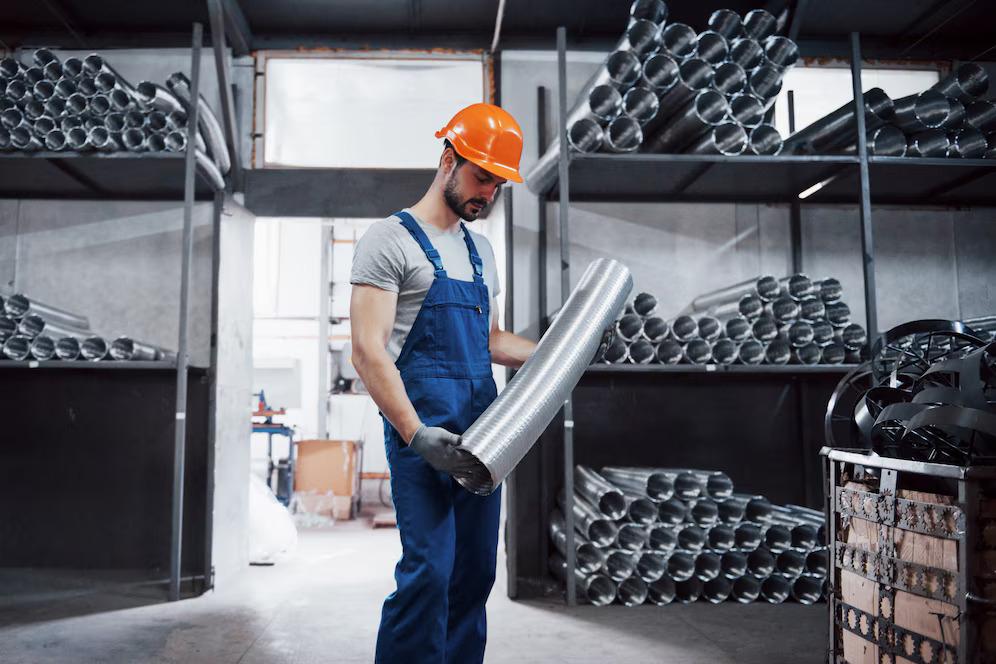Notifications

7 minutes, 15 seconds
-164 Views 0 Comments 0 Likes 0 Reviews

Steel rolling mills are plants designed primarily for processing raw steel into finished products manufactured to specific tolerances. Their powerful infrastructure uses strong and durable equipment and cutting-edge engineering to achieve high productivity and high-quality output.
Steel rolling is not just equipment but is a time-efficient method of production that meets safety regulations while yielding quality and consistent products. All information on individual structural elements presents valuable knowledge on how resources are transformed into basic building elements. An in-depth study assesses the building blocks of every average steel mill in India being set up.
A thorough examination of the fundamental parts requires first grasping the extensive dimensions along with intricate operations of an operational steel rolling mill. The manufacturing processes link every machine together to produce usable structural elements from steel billets or blooms.
Raw material handling in steel production starts at the delivery point, where billets, along with ingots or blooms, undergo storage. Steel mill operations in India use specific areas for steel unloading, followed by preparation stages before the reheating furnace receives the materials. Machine-mounted cranes, in combination with automated transport systems, move the heavy materials through continuous streams that maintain operational flow.
The reheating furnace is an essential element that ensures the raw steel material becomes suitable for deformation processes. Steel billets require heating up to more than 1100°C to become deformable in the rolling process. The heating process in these furnaces depends on facility power supplies between electric, gas, or oil systems. A consistent heating method plays a vital role since it provides equal temperatures across the rolling process.
The furnace discharge point leads directly to the roughing stand rolling mill section. The first significant deformation area exists in this part. The massive rolling stands apply pressure vertically to decrease the billet width. The main purpose remains non-precision-oriented since the goal is to ready the material for more advanced rolling processes in subsequent stages. The basic roughing stand configuration uses either horizontal rollers or vertical ones based on the target dimensions and shape.
The material thickness reaches its optimal state throughout the process due to the integration of heavy-duty gear systems and automatic screw-down mechanisms, which control the roll gap distance. The roughing stand rolling mill consists of multiple consecutive stands ranging from 2 to 3 units to achieve the maximum size reduction.
The roughed steel follows intermediate mills directly before proceeding to finishing mills. Precision functions at this level lead to dimensional variations, surface quality, and material attribute adjustments. The smaller diameter rolls, which rotate quickly, can handle tight tolerances in this part of the operation.
The guide systems, together with loopers, operate as tension controls and alignment maintainers during these processing phases. Based on product specifications, finishing stands adapt their configuration between horizontal structure and vertical configuration or universal setup. Such equipment enables plants that focus on beam, channel, rebar, or custom profile manufacturing processes.
When they reach high temperatures, the steel profiles emerge from the final rolling head directly to the cooling bed. A uniform air cooling environment in this area effectively lowers internal material stress. The equipment features fixed or mobile beds with rake systems that evenly displace rolled sections during their movement.
The bed preserves metallurgical stability during cooling and provides opportunities for material processing, such as sectioning or grouping. The design quality of a cooling zone plays an essential role in both product excellence and operational performance improvement.
The final dispatch of rolled products takes place after dimension trimming through the cutting and shearing section. The section depends on product type and temperature to use hydraulic shears, crop shears, or hot saws. Establishing proper product cuts supports customer requirements while making the material ready for bundle or package procedures.
High-end mills implement CNC shears together with automatic measuring devices for optimal cutting precision. In competitive product markets steel rolling mills recognize that precise clean edges constitute the deciding factor for customer acceptance.
Upon completion, the product must be aggregated, which arranges it for transport logistics in what is called bundling operations. Modern steel mill India facilities use computer-controlled cranes, conveyors, and even robotic arms to reduce the need for human operation and improve safety standards. Labeling and tagging every batch of products makes it simpler to assess quality control, which again facilitates product traceability.
The packaging lines process with strapping machines and wrapping implements, which keeps products secure for long-term storage and delivery. They are not as current as the support organization of dispatch management, which still needs to please customers and manage the supply as an inventory.
A steel mill in India is a perfect combination of mechanical devices with thermal and digital operation elements. RMT Tools offers world-class solutions and decades of industrial expertise for those wishing to build or upgrade a steel rolling mill. RMT Tools retains the premier position of a scalable steel manufacturer partner to Mills in India through total rolling mill project execution and servicing the roughing stands.

